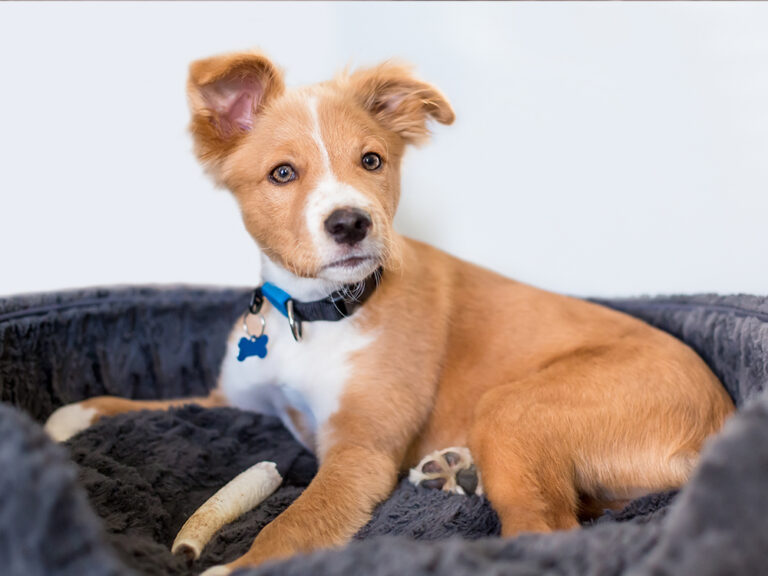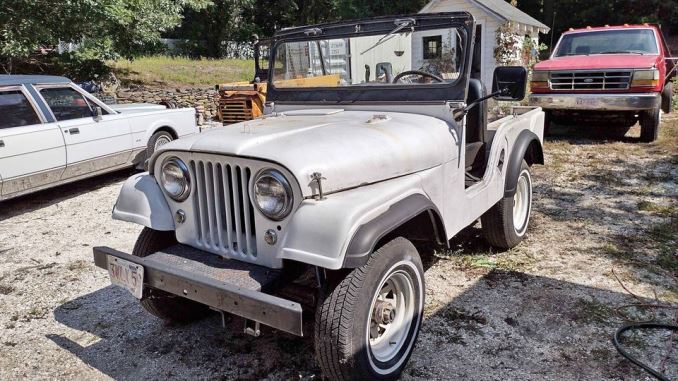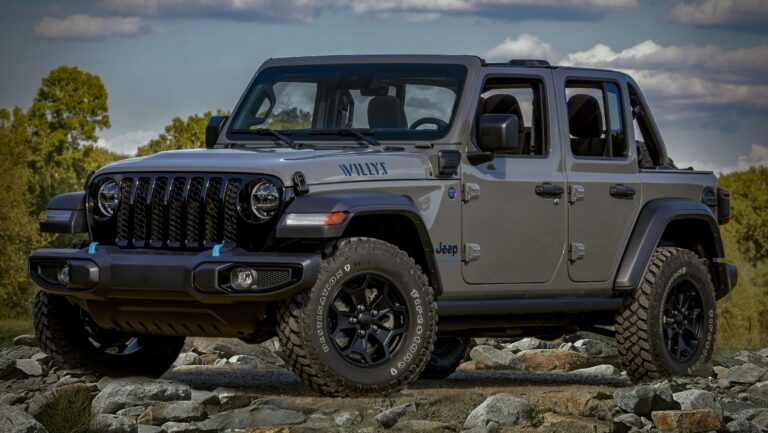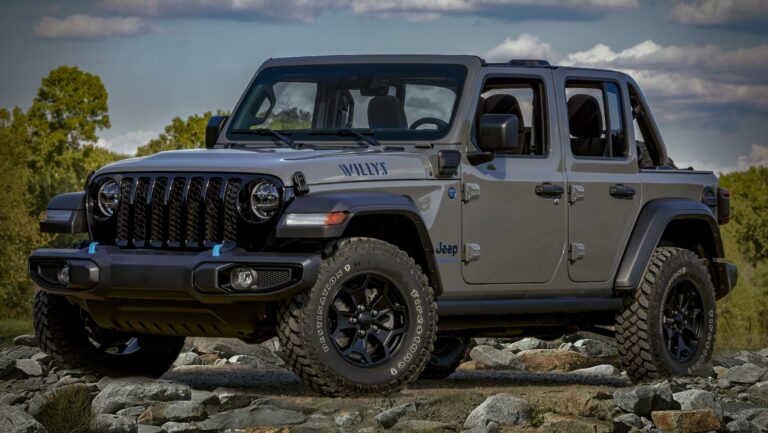Jeep CJ5 Used Tub For Sale: Your Ultimate Guide to Finding, Buying, and Restoring the Iconic Body
Jeep CJ5 Used Tub For Sale: Your Ultimate Guide to Finding, Buying, and Restoring the Iconic Body jeeps.truckstrend.com
The Jeep CJ5, an icon of American automotive history, holds a special place in the hearts of off-road enthusiasts and classic vehicle collectors alike. Its rugged simplicity, compact size, and legendary go-anywhere capability have cemented its status as a timeless classic. For many, restoring or building a CJ5 from the ground up is a passionate endeavor, and at the core of any such project lies the "tub" – the main body shell of the vehicle.
Finding a Jeep CJ5 used tub for sale is often the first critical step for anyone embarking on a CJ5 revival. This comprehensive guide will delve into everything you need to know about sourcing, evaluating, purchasing, and preparing a used CJ5 tub, transforming it from a mere shell into the foundation of your dream Jeep. Whether you’re a seasoned restorer or a first-time enthusiast, understanding the nuances of used tubs is paramount to a successful project.
Jeep CJ5 Used Tub For Sale: Your Ultimate Guide to Finding, Buying, and Restoring the Iconic Body
I. Understanding the CJ5 Tub: Anatomy and Importance
The "tub" of a Jeep CJ5 refers to the entire main body structure, encompassing the floorboards, firewall, cowl, inner and outer fender wells, rocker panels, and the rear body section. Essentially, it’s everything that sits atop the frame and houses the occupants, engine, and other components, excluding the removable hood, fenders, grille, and tailgate.
For a CJ5 restoration or custom build, the tub is arguably the most critical component. It dictates the vehicle’s overall structural integrity, aesthetics, and even its identity (though the VIN is on the frame). Original CJ5 tubs, given their age and the rough-and-tumble lives these vehicles often led, are highly susceptible to rust and damage. Common problem areas include the floorboards (especially under the pedals and seats), hat channels (structural supports under the floor), cowl areas where the windshield mounts, rocker panels, and the rear corners and wheel wells. Finding a tub in good condition can significantly reduce restoration time and cost, making the search for a quality Jeep CJ5 used tub for sale a top priority.
II. Why Buy a Used CJ5 Tub? Benefits and Considerations
Opting for a used CJ5 tub over a brand-new aftermarket replacement or a complete vehicle offers a unique set of advantages and challenges.
Benefits of a Used Tub:

- Cost-Effectiveness: Generally, a used tub is significantly cheaper than a new reproduction tub, let alone a complete running vehicle. This can free up budget for other crucial components like the engine, transmission, or suspension.
- Authenticity: For purists aiming for an original or period-correct restoration, a genuine used tub provides the correct stampings, contours, and character that reproduction tubs, while excellent, sometimes lack.
- Availability: While pristine original tubs are rare, tubs requiring varying degrees of repair are often available, providing more options than trying to find a complete, rust-free CJ5.
- Starting Point for Custom Builds: A used tub offers a blank canvas for custom modifications, allowing builders to reinforce, modify, or cut the body as needed without the guilt of altering a perfect original.
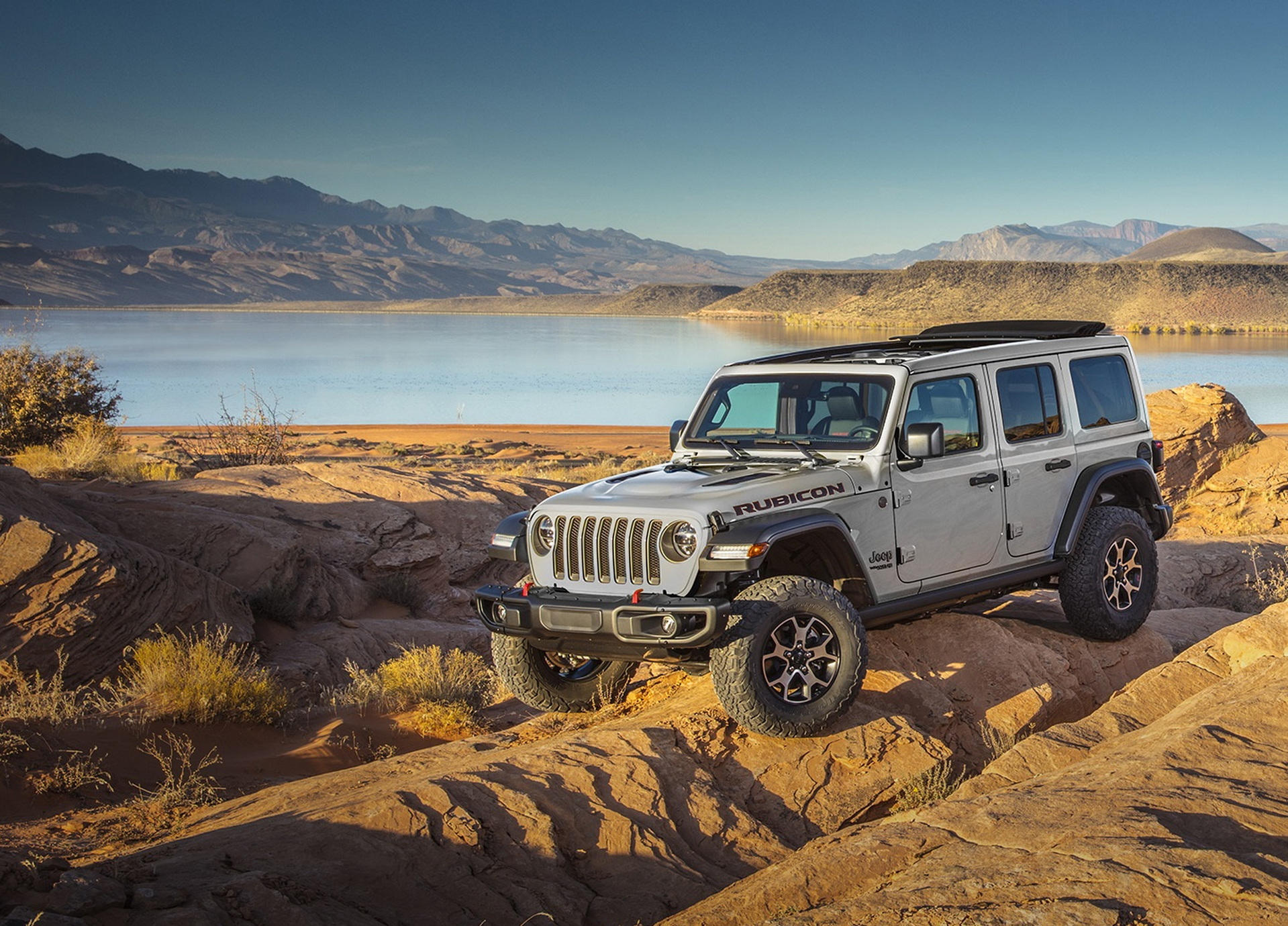
Considerations and Challenges:
- Condition Assessment: The biggest challenge is accurately assessing the true condition. Rust can be hidden, and poor previous repairs can mask significant underlying issues.
- Hidden Damage: Bondo, poorly welded patches, and structural compromises are common. A seemingly good deal can quickly turn into a money pit if not thoroughly inspected.
- Logistics: Used tubs are bulky and heavy. Shipping or transporting them requires careful planning and can be costly, especially over long distances.
- Legal/VIN Issues: While the tub itself doesn’t carry the VIN (that’s on the frame), ensuring the tub isn’t stolen or linked to any legal issues is good practice, though rarely a problem for a bare tub.

III. Where to Find a Jeep CJ5 Used Tub for Sale
The search for a Jeep CJ5 used tub for sale can be an adventure in itself. Knowing where to look significantly improves your chances of success.
- Online Marketplaces:
- eBay: Often has a selection, though shipping can be a major factor. Look for sellers offering local pickup.
- Facebook Marketplace/Groups: Excellent for finding local deals. Search for "Jeep CJ5 tub," "CJ5 body," or "CJ5 parts." Specific Jeep CJ/vintage Jeep groups are goldmines.
- Craigslist: Local classifieds are still effective for finding large items that are difficult to ship.
- Specialized Jeep Forums and Communities: Websites like Jeepforum.com, Pirate4x4.com, and specific CJ-focused forums often have "parts for sale" sections where enthusiasts sell their spares. These communities are also great for getting advice.
- Salvage Yards/Junkyards: Particularly those specializing in older 4x4s. Call ahead to check inventory, as tubs are large and not always kept.
- Restoration Shops/Part Dealers: Some classic Jeep restoration shops or specialized parts dealers might have tubs they’ve removed from donor vehicles or acquired for parts. They might also know of local leads.
- Word-of-Mouth/Local Classifieds: Don’t underestimate the power of local connections. Talk to other Jeep owners, mechanics, and attend local car shows or swap meets.
Tips for Searching: Be persistent, set up alerts on online platforms, and be prepared to travel for a good find. Good deals often go quickly.
IV. What to Look For: A Comprehensive Inspection Guide
This is perhaps the most crucial section. A thorough inspection can save you thousands in future repairs.
- Rust: This is the primary enemy.
- Floorboards: Check thoroughly, especially under the seats, pedals, and where feet rest. Tap with a hammer or screwdriver to check for soft spots.
- Hat Channels: These are the critical structural supports underneath the floor. Rust here compromises the entire tub’s integrity.
- Cowl: Inspect where the windshield frame bolts on and the area around the fresh air vents. Water collects here.
- Rocker Panels: These are highly exposed to road grime and rust from the inside out.
- Wheel Wells and Rear Corners: Areas prone to mud and water collection.
- Body Mounts: Check the areas where the tub bolts to the frame for rust or tearing.
- Damage:
- Dents and Bends: Minor dents are fixable, but large creases or bends in structural areas indicate significant impact.
- Tears/Cracks: Common around body mounts or areas that experienced stress.
- Previous Repairs: Look closely for signs of Bondo (thick body filler), inconsistent paint, or poor welding. A good repair is almost invisible; a bad one will show.
- Completeness:
- Does it include the firewall, dash, inner fender wells, tailgate opening, and door openings? Missing sections increase restoration cost.
- Are the body lines straight? Misaligned lines could indicate twisting or frame damage if the tub was removed from a wrecked vehicle.
- Previous Modifications: Check for unwanted cutouts (e.g., for larger tires, custom roll cages), extra holes drilled, or welded patches. Some modifications might be desirable, others might require extensive repair.
- Structural Integrity: If possible, have it mounted on a frame or a sturdy stand to check for twist or sag. This is less common for a bare tub, but important if still partially assembled.
- Photography/Video: If you can’t inspect in person, request detailed, high-resolution photos from every angle, including close-ups of problem areas. Ask for videos, especially showing undercarriage and problem spots.
- In-Person Inspection: Always preferred. Bring a magnet to check for bondo (it won’t stick to filler), a flashlight for dark areas, and a small hammer or screwdriver for tapping.
V. Pricing a Used CJ5 Tub: Factors Influencing Cost
The price of a Jeep CJ5 used tub for sale varies widely based on several factors. Understanding these can help you negotiate and determine a fair value.
- Condition (Major Determinant): A rust-free, straight tub will command a premium. A tub with extensive rust and damage will be significantly cheaper but will require more investment in time and materials for repair.
- Completeness: A bare tub (just the shell) will be less expensive than one that includes the dash, firewall, inner fenders, and possibly even the windshield frame or other attached components.
- Location: Tubs located in dry climates (e.g., Southwest US) tend to be in better condition and thus fetch higher prices. Shipping from these areas can be costly. Local availability often means lower prices due to reduced transport costs.
- Rarity/Demand: While CJ5s are common, specific year models or original configurations might influence price slightly, though condition remains king.
- Seller’s Urgency: A seller needing quick cash or space might be more willing to negotiate.
Estimated Price Table for Jeep CJ5 Used Tubs
| Condition Category | Completeness Level | Estimated Price Range (USD) | Notes/Typical Issues |
| :—————– | :—————– | :————————– | :————————————————————————————————————————————————————————————————————————————————————————————————————————————————————————————————————————————————————————————————————————————————————————————————————————————————————————————————————————————————————————————————————————————————————————————————————————————————————————————————————————————————————————————————————————————————————————————————————————————————————————————————————————————————————————————————————————————————————————————————————————————————————————————————————————————————————————————————————————————————————————————————————————————————————————————————————————————————————————————————————————————————————————————————————————————————————————————————————————————————————————————————————————————————————————————————————————————————————————————————————————————————————————————————————————————————————————————————————————————————————————————————————————————————————————————————————————————————————————————————————————————————————————————————————————————————————————————————————————————————————————————————————————————————————————————————————————————————————————————————————————————————————————————————————————————————————————————————————————————————————————————————————————————————————————————————————————————————————————————————————————————————————————————————————————————————————————————————————————————————————————————————————————————————————————————————————————————————————————————————————————————————————————————————————————————————————————————————————————————————————————————————————————————————————————————————————————————————————————————————————————————————————————————————————————————————————————————————————————————————————————————————————————————————————————————————————————————————————————————————————————————————————————————————————————————————————————————————————————————————————————————————————————————————————————————————————————————————————————————————————————————————————————————————————————————————————————————————————————————————————————————————————————————————————————————————————————————————————————————————————————————————————————————————————————————————————————————————————————————————————————————————————————————————————————————————————————————————————————————————————————————————————————————————————————————————————————————————————————————————————————————————————————————————————————————————————————————————————————————————————————————————————————————————————————————————————————————————————————————————————————————————————————————————————————————————————————————————————————————————————————————————————————————————————————————————————————————————————————————————————————————————————————————————————————————————————————————————————————————————————————————————————————————————————————————————————————————————————————————————————————————————————————————————————————————————————————————————————————————————————————————————————————————————————————————————————————————————————————————————————————————————————————————————————————————————————————————————————————————————————————————————————————————————————————————————————————————————————————————————————————————————————————————————————————————————————————————————————————————————————————————————————————————————————————————————————————————————————————————————————————————————————————————————————————————————————————————————————————————————————————————————————————————————————————————————————————————————————————————————————————————————————————————————————————————————————————————————————————————————————————————————————————————————————————————————————————————————————————————————————————————————————————————————————————————————————————————————————————————————————————————————————————————————————————————————————————————————————————————————————————————————————————————————————————————————————————————————————————————————————————————————————————————————————————————————————————————————————————————————————————————————————————————————————————————————————————————————————————————————————————————————————————————————————————————————————————————————————————————————————————————————————————————————————————————————————————————————————————————————————————————————————————————————————————————————————————————————————————————————————————————————————————————————————————————————————————————————————————————————————————————————————————————————————————————————————————————————————————————————————————————————————————————————————————————————————————————————————————————————————————————————————————————————————————————————————————————————————————————————————————————————————————————————————————————————————————————————————————————————————————————————————————————————————————————————————————————————————————————————————————————————————————————————————————————————————————————————————————————————————————————————————————————————————————————————————————————————————————————————————————————————————————————————————————————————————————————————————————————————————————————————————————————————————————————————————————————————————————————————————————————————————————————————————————————————————————————————————————————————————————————————————————————————————————————————————————————————————————————————————————————————————————————————————————————————————————————————————————————————————————————————————————————————————————————————————————————————————————————————————————————————————————————————————————————————————————————————————————————————————————————————————————————————————————————————————————————————————————————————————————————————————————————————————————————————————————————————————————————————————————————————————————————————————————————————————————————————————————————————————————————————————————————————————————————————————————————————————————————————————————————————————————————————————————————————————————————————————————————————————————————————————————————————————————————————————————————————————————————————————————————————————————————————————————————————————————————————————————————————————————————————————————————————————————————————————————————————————————————————————————————————————————————————————————————————————————————————————————————————————————————————————————————————————————————————————————————————————————————————————————————————————————————————————————————————————————————————————————————————————————————————————————————————————————————————————————————————————————————————————————————————————————————————————————————————————————————————————————————————————————————————————————————————————————————————————————————————————————————————————————————————————————————————————————————————————————————————————————————————————————————————————————————————————————————————————————————————————————————————————————————————————————————————————————————————————————————————————————————————————————————————————————————————————————————————————————————————————————————————————————————————————————————————————————————————————————————————————————————————————————————————————————————————————————————————————————————————————————————————————————————————————————————————————————————————————————————————————————————————————————————————————————————————————————————————————————————————————————————————————————————————————————————————————————————————————————————————————————————————————————————————————————————————————————————————————————————————————————————————————————————————————————————————————————————————————————————————————————————————————————————————————————————————————————————————————————————————————————————————————————————————————————————————————————————————————————————————————————————————————————————————————————————————————————————————————————————————————————————————————————————————————————————————————————————————————————————————————————————————————————————————————————————————————————————————————————————————————————————————————————————————————————————————————————————————————————————————————————————————————————————————————————————————————————————————————————————————————————————————————————————————————————————————————————————————————————————————————————————————————————————————————————————————————————————————————————————————————————————————————————————————————————————————————————————————————————————————————————————————————————————————————————————————————————————————————————————————————————————————————————————————————————————————————————————————————————————————————————————————————————————————————————————————————————————————————————————————————————————————————————————————————————————————————————————————————————————————————————————————————————————————————————————————————————————————————————————————————————————————————————————————————————————————————————————————————————————————————————————————————————————————————————————————————————————————————————————————————————————————————————————————————————————————————————————————————————————————————————————————————————————————————————————————————————————————————————————————————————————————————————————————————————–The Jeep CJ5, a paragon of off-road prowess and enduring design, holds a cherished spot in automotive history. For enthusiasts, restoring or building a custom CJ5 is more than just a hobby; it’s a deep dive into an era of raw, unfiltered adventure. At the heart of such a project lies a crucial component: the "tub." This comprehensive guide, "Jeep CJ5 Used Tub For Sale," is designed to be your indispensable resource, navigating the intricacies of finding, evaluating, purchasing, and preparing this vital piece of your classic Jeep puzzle. Understanding the role and condition of a used tub is paramount to a successful and rewarding restoration journey, ensuring your resurrected CJ5 is as robust and authentic as its legendary predecessors.
I. Understanding the CJ5 Tub: Anatomy and Importance
The "tub" of a Jeep CJ5 refers to the vehicle’s primary body shell. This encompasses the floorboards, firewall, cowl (the area where the windshield mounts), inner and outer fender wells, rocker panels, and the entire rear body section up to the tailgate opening. Essentially, it’s the foundational structure that houses the occupants, the dashboard, and connects to the frame, providing the vehicle’s characteristic shape and interior space. It’s distinct from the removable exterior panels like the hood, front fenders, and grille, though these often attach directly to the tub’s structure.
For any CJ5 restoration or custom build, the tub is arguably the most significant and often most challenging component to acquire in good condition. Its importance stems from its role as the vehicle’s core structural element and aesthetic shell. Given the CJ5’s age (production ran from 1955 to 1983) and its intended use as a rugged utility and off-road vehicle, original tubs are highly susceptible to wear, tear, and corrosion. Common problem areas include the floorboards (especially under the driver and passenger footwells, where moisture collects), the "hat channels" (the crucial structural supports running beneath the floor), the cowl area (prone to rust due to water drainage and windshield frame mounting points), rocker panels (exposed to road debris and internal moisture), and the rear wheel wells and corners. Finding a tub with minimal rust and structural damage can dramatically reduce the time, effort, and cost of a restoration project, making the search for a quality Jeep CJ5 used tub for sale a critical initial undertaking.
II. Why Buy a Used CJ5 Tub? Benefits and Considerations
The decision to purchase a used CJ5 tub rather than investing in a new aftermarket reproduction or a complete, potentially compromised, donor vehicle involves weighing several factors.
Benefits of a Used Tub:
- Cost-Effectiveness: A used tub, even one requiring some repair, is typically significantly more affordable than a brand-new reproduction body. This cost saving can be reallocated to other essential components like the engine, transmission, or a robust suspension system.
- Authenticity and Patina: For purists aiming for a period-correct restoration, an original used tub offers the correct factory stampings, subtle contours, and the inherent character that only age can bestow. While new tubs are excellent, they lack the historical authenticity.
- Availability: While perfectly rust-free original tubs are rare, those requiring varying degrees of repair are more frequently found than complete, pristine CJ5 vehicles. This expands the pool of potential project foundations.
- Ideal for Custom Builds: A used tub provides an excellent blank canvas for customizers. It can be reinforced, modified, or even partially sectioned without the concern of cutting into a valuable, flawless original piece, allowing for unique off-road or show vehicle designs.
Considerations and Potential Challenges:
- Accurate Condition Assessment: The most significant challenge is truly understanding the tub’s condition. Rust can be expertly hidden by paint or body filler, and previous poor repairs can mask severe underlying structural issues.
- Hidden Damage: Beyond rust, look for signs of significant impact damage, twisting, or poorly executed modifications that might compromise structural integrity. What appears to be a good deal can quickly escalate into a budget-busting project.
- Logistical Hurdles: Used tubs are large, awkward, and heavy. Transporting them, especially over long distances, requires careful planning, appropriate vehicles (trailer or flatbed), and can incur substantial shipping costs.
- VIN and Legalities: While the tub itself does not carry the Vehicle Identification Number (VIN) – that’s on the frame – it’s always wise to ensure the tub isn’t linked to any questionable past, though this is rarely an issue for a bare body shell.
III. Where to Find a Jeep CJ5 Used Tub for Sale
The quest for a suitable Jeep CJ5 used tub for sale requires persistence and a strategic approach. Knowing the most fruitful avenues for your search can significantly improve your chances of success.
- Online Marketplaces:
- eBay: A global marketplace where tubs often appear. Be meticulous about reviewing seller photos and descriptions, and always factor in shipping costs or look for "local pickup only" listings.
- Facebook Marketplace & Dedicated Groups: These are incredibly effective, especially for finding local deals. Search terms like "Jeep CJ5 tub," "CJ5 body," or "CJ5 parts." Joining specific "Jeep CJ Owners" or "Vintage Jeep Parts" groups can yield direct leads from enthusiasts.
- Craigslist: Still a strong platform for large, local items that are difficult to ship. Regularly check listings in your region and surrounding areas.
- Specialized Jeep Forums and Online Communities: Websites such as Jeepforum.com, Pirate4x4.com, and dedicated CJ-focused forums often have "Parts For Sale" sections. These communities are invaluable not only for finding parts but also for seeking advice and verification from experienced members.
- Salvage Yards and Auto Recyclers: Particularly those specializing in older 4x4s or classic vehicles. Call ahead to inquire about their inventory, as tubs are bulky and might be stored off-site.
- Classic Jeep Restoration Shops and Part Dealers: Some professional restoration outfits or specialized aftermarket parts vendors might occasionally have original tubs they’ve removed from donor vehicles or acquired as inventory. They might also be able to source one for you or know of local leads.
- Word-of-Mouth and Local Classifieds: Don’t underestimate the power of networking. Talk to other Jeep owners, mechanics, and attend local car shows, swap meets, or off-road events. A local "for sale" sign or a conversation can sometimes lead to the best finds.
Pro-Tip for Searching: Be consistent in your search, set up email alerts on online platforms for new listings, and be prepared to travel a reasonable distance for a promising lead. The best deals often go quickly.
IV. What to Look For: A Comprehensive Inspection Guide
A thorough and meticulous inspection is the most critical step in purchasing a used CJ5 tub. This can prevent costly surprises and save countless hours of frustrating repair work down the line.
- Rust: The Primary Enemy
- Floorboards: Inspect every inch, especially under the pedals, seats, and where feet rest. Probe with a small hammer or screwdriver to detect soft, corroded areas or patches.
- Hat Channels: These vital structural cross-members beneath the floor are major rust traps. Inspect their condition thoroughly, as severe rust here compromises the entire tub’s integrity.
- Cowl and Firewall: Check the area where the windshield frame bolts on, the fresh air vents, and the lower sections of the firewall. Water often collects and sits here.
- Rocker Panels: These are highly exposed to road grime and moisture. Rust often starts from the inside out.
- Wheel Wells and Rear Corners: Areas prone to mud and water accumulation, leading to perforation.
- Body Mounts: Examine the attachment points where the tub bolts to the frame. Look for rust, cracks, or tearing of the metal.
- Damage and Previous Repairs:
- Dents and Bends: Minor dents are manageable, but large, sharp creases, especially in structural areas, indicate significant impact.
- Tears and Cracks: Common around stress points like body mounts or suspension attachment areas.
- Previous Repairs: Scrutinize any areas that appear patched or repainted. Look for signs of excessive body filler (Bondo – use a magnet; it won’t stick to filler), inconsistent paint texture, or poorly executed welds. A quality repair should be almost invisible.
- Completeness:
- Verify what is included: Is it just the bare shell, or does it come with the dash, firewall, inner fender wells, or parts of the cowl assembly? Missing components add to your overall project cost.
- Check for straightness: Are the body lines reasonably straight? Significant warping or twisting could indicate previous severe damage or improper storage.
- Previous Modifications:
- Inspect for unwanted cutouts (e.g., for larger tires, custom roll cages, or drivetrain swaps), extra drilled holes, or amateurish welded patches. While some modifications might be desirable, others could require extensive undoing and repair.
- Structural Integrity: If the tub is still mounted on a frame (even a rusty one), observe how it sits. Look for any noticeable sag or twist.
- Remote Inspection Protocol: If an in-person inspection isn’t possible, request an abundance of high-resolution photos from every conceivable angle, including detailed close-ups of all potential problem areas (underside, inside, common rust spots). Ask for video walk-arounds, especially showing areas that might be difficult to photograph.
- In-Person Inspection Essentials: Bring a powerful flashlight, a small magnet, and a small hammer or screwdriver for gently tapping suspected areas to listen for solid metal vs. crumbling rust or thick filler.
V. Pricing a Used CJ5 Tub: Factors Influencing Cost
The price of a Jeep CJ5 used tub for sale is highly variable, reflecting its condition, completeness, and market demand. Understanding these influencing factors will empower you to negotiate effectively and determine a fair value for your potential purchase.
- Condition (Primary Driver): This is the most significant factor. A tub with minimal to no rust and straight body panels will command a premium price. Conversely, a tub requiring extensive rust repair, patching, and bodywork will be significantly cheaper, but necessitates a greater investment in labor and materials for restoration.
- Completeness: A bare tub (just the core body shell) will be less expensive. A tub that includes the original dash, firewall, inner fenders, and possibly the cowl assembly or other attached components will typically fetch a higher price due to the added value of these harder-to-find parts.
- Geographic Location: Tubs originating from dry, arid climates (e.g., the Southwestern U.S.) are often in superior condition due to less exposure to rust-causing moisture and road salt. These tubs generally command higher prices, and shipping costs from these regions can be substantial. Local availability can mean lower prices due to reduced transport expenses.
- Rarity/Specific Year Models: While CJ5s are generally plentiful, tubs from certain early years or specific limited editions might slightly influence the price, though condition still overwhelmingly dictates value.
- Seller’s Motivation: A seller who needs to quickly clear space or generate cash may be more open to negotiation, potentially leading to a better deal for the buyer.
Estimated Price Table for Jeep CJ5 Used Tubs
This table provides general price ranges. Actual prices can vary based on specific seller, location, and market demand at the time of sale.
| Condition Category | Completeness Level | Estimated Price Range (USD) | Notes/Typical Issues |
|---|
